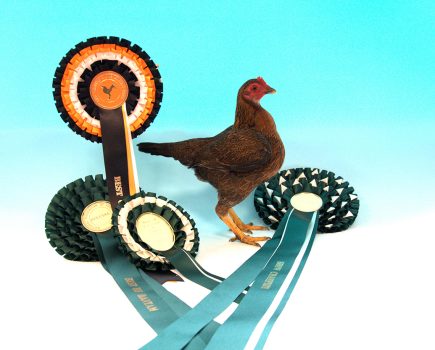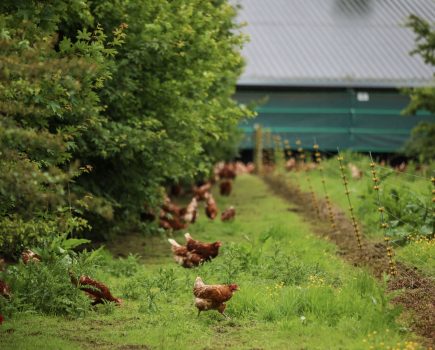NOVEMBER 15, 2007: The outbreak of H5N1 Avian Flu in Suffolk is no a reason for all organic and free-range birds to be permanently confined, as some commentators have suggested, or for poultry across the whole of the UK to be confined or isolated, says the Soil Association.
The outbreak has so far been isolated to a free-range farm in Suffolk producing turkeys, geese and ducks. The Soil Association said it supports Defra’s requirements for poultry keepers to house and/or isolate their birds from any contact with wild birds in the restricted areas in Norfolk/Suffolk while there is uncertainty as to where the disease came from and how it might have spread. “We welcome the fact that Defra’s risk assessment has kept the restricted zone to Norfolk and Suffolk, not the whole of the UK,” it said.”The Soil Association has worked closely with Defra over the past two years to agree appropriate and effective isolation measures for organic, free-range birds – achieving good biosecurity whilst maintaining high welfare standards.”The key is vigilance on the part of producers to spot any signs of the disease and good management of their birds to try to avoid it ever coming onto their farms. Therefore, as with earlier alerts of potential outbreaks and the first confirmed case of the high-pathogenic H5N1 strain of bird ‘flu in a UK commercial poultry unit in February 2007 – the Soil Association has contacted all its licensees in the restriction zone of Norfolk and Suffolk to ensure that they are aware of the Defra requirements and have housed or isolated their birds as appropriate. “As previously, we have also contacted all our licensed producers across the UK to make sure they have a contingency plan of what they would do if they were required to house or isolate birds and reinforcing the need for good biosecurity generally.”At present, this remains an isolated incident limited to a specific area of the country – therefore, the Soil Association supports Defra’s strategy of culling all infected and suspected infected birds on the affected farm. “Should there be a wider incidence of confirmed outbreaks beyond the immediate area, then the Soil Association urges Defra to be ready to deploy vaccination. Following persistent lobbying by the Soil Association, then Defra Minister Ben Bradshaw confirmed in July 2007 that Defra had secured a stockpile of 10 million doses of vaccine to use strategically in the event of future outbreaks.” The Soil Association says trigger-points for deploying vaccination are:1. If organic and free-range birds have to be kept indoors or isolated for more than 12 weeks (the legal limit to maintain organic status). Vaccination in advance of this cut-off point would allow birds back outdoors without risk of contracting or acting as carriers for the disease.2. Culling of affected flocks is failing to control the spread of the disease. Strategic use of vaccination would slow down and prevent the further spread of the disease – an approach endorsed by the European Union, World Organisation for Animal Health, and the UN Food and Agriculture Organisation – as well as avoiding the wholesale culling and disposal of poultry with consequent animal welfare issues and public distaste (i.e. as arose during mass cull of 2001 FMD outbreak).3. The disease becomes endemic in wild birds in the UK. This is the only trigger point at which preventative ‘blanket’ vaccination for all UK organic and free-range poultry and waterfowl should be considered.”Therefore, the Soil Association does not recommend vaccination unless there is a major increase in any new cases found, or, new cases are found outside of the East of England,” it said.”It is unfortunate that the disease has occurred on an organic poultry unit farm. But all types of poultry system can be affected by this disease – not just free range and organic birds. Indeed, the first outbreak of H5N1 on a commercial farm in the UK in February 2007 was in an intensive, indoor unit.”It is still unknown whether this instance of the disease was spread by wild birds or by movement of poultry or poultry products. At present we are obviously concerned with its circulation and how this can affect free-range and organic birds. But in the longer-term, we need to look at the underlying causes of this disease. In particular, the evolution of this more virulent strain of disease which the Soil Association believes has its roots in industrial poultry production. “For further information go to www.soilassociation.org/birdfluor contact:Anna Bassett, poultry advisor 01822 880334







